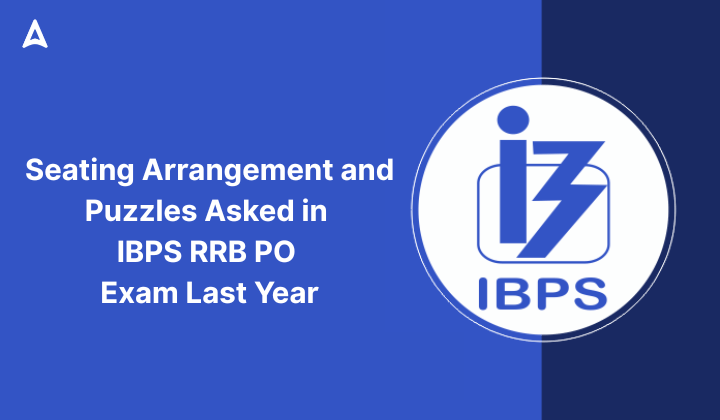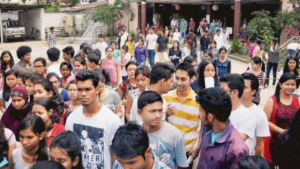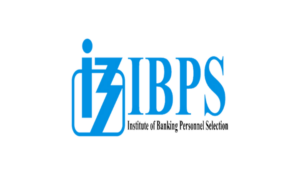The IBPS RRB PO exam is known for testing the reasoning ability of candidates through different types of questions. Among them, seating arrangement and puzzles play a very important role. These questions check how well a candidate can understand and organize information. In last year’s exam, many candidates found these questions to be tricky and time-consuming. In this article, we will look at the types of seating arrangement and puzzles that were asked in the IBPS RRB PO exam last year to help you prepare better.
Seating Arrangement and Puzzles Asked in IBPS RRB PO Exam Last Year
These questions required logical thinking and a clear understanding of the given clues. Most of them were based on circular arrangements, linear seating, and various types of puzzles involving persons, floors, boxes, and days. Solving such questions needs regular practice. Below are the questions from the seating arrangement and puzzles section that were asked in the IBPS RRB PO exam last year.
Directions (1–5):
Study the following information carefully and answer the questions given below:
Fourteen persons sit in two parallel rows. A, B, C, D, E, F, G sit in row-1 facing north and P, Q, R, S, T, U, V sit in row-2 facing south such that the persons sitting in row-1 face the persons sitting in row-2. V is the only immediate neighbour of S. T sits 2nd to the left of V. Two persons sit between T and the one who faces F. A sits exactly between B and C who sits diagonally opposite to R. A does not face V. P faces D. G faces the one who sits just right of U. E does not face T.
Q1. Who sits second to the right of the one who faces B?
(a) P
(b) Q
(c) R
(d) S
(e) U
Q2. Four of the following five are alike in a certain way and hence form a group. Which of the following does not belong to that group?
(a) V
(b) A
(c) U
(d) G
(e) F
Q3. The number of persons sit between Q and R is same as the number of persons sit to the left of ______.
(a) G
(b) D
(c) U
(d) C
(e) V
Q4. If U is related to Q in a certain way and B is related to F in the same way, to whom is A related?
(a) E
(b) D
(c) B
(d) F
(e) C
Q5. Which of the following statements is true?
(a) P sits diagonally opposite to F
(b) More than one person sits between D and G
(c) P does not sit just left of U
(d) F sits at one of the extreme ends
(e) None is true
Directions (6–10):
Study the following information carefully and answer the questions given below:
Seven persons M, N, O, P, Q, R, and S sit in a row and all of them face towards the north direction. Each of them likes different fruits viz. Apple, Banana, Mango, Orange, Grapes, Pineapple, and Watermelon. All the information is not necessarily in the same order. R sits third to the right of O who likes Mango. R sits second to the left of Q. The one who likes Banana sits at one of the extreme ends of the row. P sits third to the right of the one who likes Grapes. Only two persons sit between N and Q. R doesn’t like Watermelon. S sits fourth to the left of R. The one who likes Apple sits second to the right of N who likes neither Watermelon nor Pineapple. S doesn’t sit to the right of the one who likes Banana.
Q6. Which of the following fruit does P like?
(a) Banana
(b) Pineapple
(c) Apple
(d) Grapes
(e) None of these
Q7. Who among the following likes Watermelon?
(a) S
(b) M
(c) Q
(d) P
(e) None of these
Q8. Which of the following pair sit at the extreme ends?
(a) M, N
(b) Q, P
(c) Q, N
(d) M, Q
(e) None of these
Q9. Which of the following is true?
I. P sits 2nd to the right of the one who likes Mango
II. O and M are immediate neighbours
III. S sits 2nd to the left of the one who likes Grapes
(a) Only I
(b) Both II and III
(c) Only III
(d) Both I and II
(e) Only II
Q10. What is the position of the one who likes Apple to the one who likes Banana?
(a) 2nd to the right
(b) Immediate right
(c) 4th to the right
(d) 2nd to the left
(e) None of these
| Related Posts | |
| IBPS RRB Previous Year Papers | IBPS RRB PO Eligibility |
| IBPS RRB PO Salary | IBPS RRB PO Cut Off |
| IBPS RRB PO Syllabus | |




 IBPS RRB PO Mains Exam Analysis 2025, Al...
IBPS RRB PO Mains Exam Analysis 2025, Al...
 Daily Current Affairs News: 27th Decembe...
Daily Current Affairs News: 27th Decembe...
 IBPS RRB PO Mains Admit Card 2025 Out at...
IBPS RRB PO Mains Admit Card 2025 Out at...







